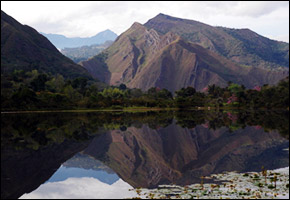Peter Gleick: Unsafe Drinking Water for California’s Poor – Unfair, Unnecessary, and Unacceptable
The United States has — for the most part — an excellent tap water system. Much of the rest of the world wishes they had a system as good. But our tap water system is not as good as it should (or could) be and new evidence is surfacing that the fundamental national laws that protect freshwater and drinking water quality are desperately in need of modernization and revision, just as some members of the House of Representatives are pushing to gut the ability of the U.S. Environmental Protection Agency to monitor and enforce water-quality laws and to fund improvements in water safety.
A new study finds that the health of significant populations in California’s Central Valley could be at risk from drinking water contaminated with nitrates, mostly from agricultural fertilizers used on irrigated land. Perhaps the most disturbing finding of the new report is that those most at risk are disproportionately low-income households and Spanish-speaking residents. The study, The Human Costs of Nitrate-Contaminated Drinking Water in the San Joaquin Valley, is a collaboration of the Pacific Institute, Community Water Center, Clean Water Fund, and California Rural Legal Assistance Foundation (funded by the David and Lucile Packard Foundation and the California Environmental Protection Agency Environmental Justice Small Grants Program). It is the only known study that systematically documents the household-level costs of nitrate contamination in four communities in the San Joaquin Valley, with a focus on what households must pay to find other sources of water, the costs to local water systems of removing or avoiding nitrates, and suggestions for key policies and further research needed to better understand and resolve this entrenched challenge.
Nitrate levels in drinking water are regulated because of the potentially fatal effect ingestion can have on infants, known as Blue Baby Syndrome, and the harmful effects of high levels of nitrates on respiratory and reproductive systems, the kidneys, spleen, and thyroid in children and adults. As Eli Moore, coauthor of the report said,
“Nitrate-contaminated drinking water has a pronounced impact on residents in small community water systems. Their health and their resources are compromised when they consume their tap water or pay for water from safer sources — and the problem is most dire in some areas of the state with the least capacity to cope with its effects and invest in sustainable solutions.”
Water Number: 1.3 million people may be exposed to nitrate contaminated drinking water in the San Joaquin Valley.
We do not know precisely how many people in California’s Central Valley, or in the U.S. as a whole, are drinking contaminated tap water. And while the vast majority of Americans have safe and affordable water, too many people do not. A first estimate of the potential population at risk from nitrate-contaminated water in the San Joaquin Valley comes from an analysis of water systems with quarterly nitrate measurements above the Maximum Contaminant Level permitted by law. These preliminary results indicate that 1.3 million people are served by water systems that may sometimes, or often (we don’t know), produce drinking water contaminated by nitrates. This is 35% of the total population of the San Joaquin Valley. And the systems most at risk are the smallest — typically serving fewer than 200 connections and typically serving the poorest communities in the region. In addition to public water systems, California’s State Water Board sampled 181 domestic wells in Tulare County in 2006 and found that 40% of those tested had nitrate levels above the legal limit. Moreover, nitrates are only one of a number of contaminants that are sometimes found in our drinking water. And because the sources of nitrates have never been adequately regulated at the state or federal level, nitrate levels have increased dramatically in drinking water supplies over the last few decades.
The expense to households of having to purchase drinking water pushes household water costs well above affordable levels. Households in the primary community surveyed spend an average of $.65 per gallon to buy other water, or more than 200 times the average water rate in California. The total average household water costs in that community was nearly 5% of median household income, more than three times the affordability threshold for drinking water recommended by the U.S. EPA.
The problem is getting worse, not better. Nitrate contamination is spreading in the Valley. Already, at least 88 water providers in the San Joaquin Valley are in need of projects to mitigate nitrate contamination, and some have been waiting longer than ten years without receiving necessary funding.
Like most Pacific Institute studies, the report also offers solutions, including efforts to reduce current and prevent new contamination, finding new uncontaminated sources of water, consolidation of small water systems into larger ones with the financial and technical resources to provide safe water, installation of water treatment systems at the utility level, or — in the most inequitable and least attractive solution — purchase of expensive filtration systems for individual homes. And in the meantime, more concerted effort is needed to ensure that nitrate-affected communities are well-informed about their water quality and appropriate measures to protect their health.
All of this requires three things: an understanding of the severity and extent of the problem, a willingness to act to protect public health, and money for implementing solutions. The report from the Pacific Institute contributes to the first, though far better water-quality monitoring and evaluation are needed; our communities and public officials have to step up for the second. And water users, the State, and the Federal governments must find the funds for the third. In the 21st century it is entirely unacceptable for anyone in the United States, and frankly, in the world, to be drinking unsafe water and it is especially egregious that it is our poorest and most vulnerable populations that suffer the most.
Peter Gleick







Yes the 3 proposals to address the contamination of drinking water have much merit and should be implemented asap; however, an ongoing programme of reducing chemicals used in agriculture should be included in the urgent ‘ to do ‘ list.